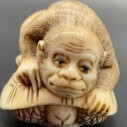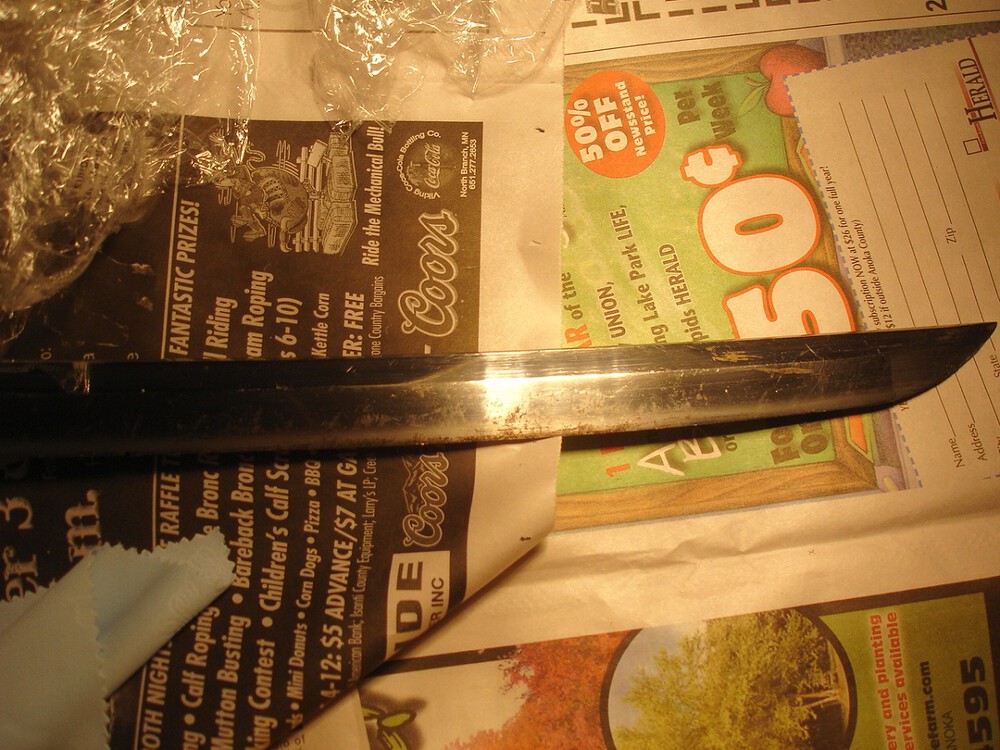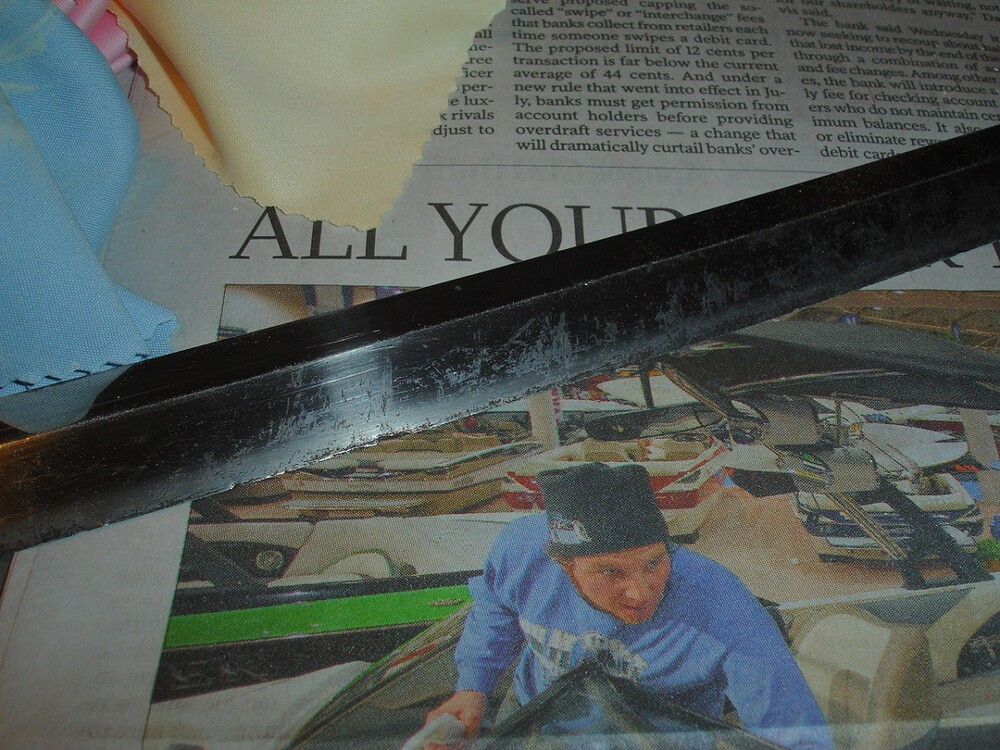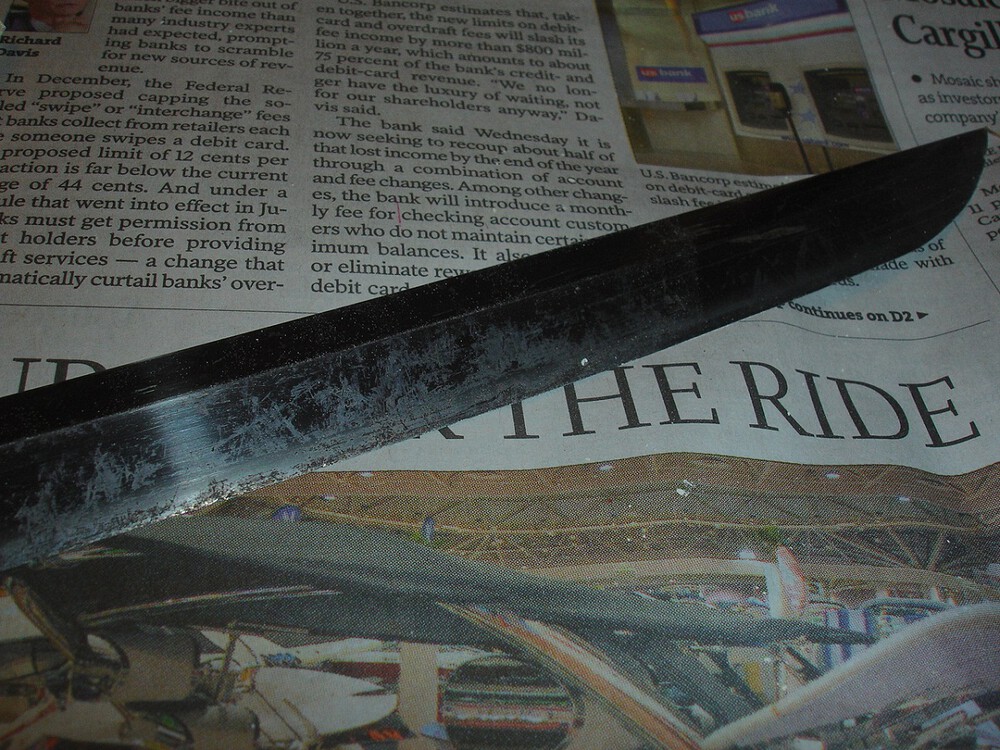-
Posts
158 -
Joined
-
Last visited
-
Days Won
1
Content Type
Profiles
Forums
Events
Store
Downloads
Gallery
Everything posted by Wickstrom
-
Thank you for your response Jean. It’s unfortunate to hear its a copy but thankfully I waited to make an offer for it.
-
Hello All, A friend of mine who owns an antique shop got a hodgepodge of things from a local collector in. Everything from Bronze Age Luristan Daggers to 20th century African Pendants. This Tsuba was in the mix as well. Any information you could provide would be greatly appreciated!
-
Everything went well. Glad we could work out a deal!
-
Thank-you very much Piers and Uwe. That would probably be a very good assumption given the fact it was more than likely a loaner set borrowed by a retainer from the Daimyo's armory. I'm sure they would have had some inventory system in place related to sizing to expedite the process of outfitting troops before a campaign.
-
I picked up this set of munitions grade armor a little while back. It's certainly seen better days but this is my first "real" set of armor and i'm very happy with it despite it's condition. There are two characters written in paint on the both of the kote near where it attaches to the dou. Any guesses as to what it says and means? Thanks
-
I was referring to the gold patterning on the top and bottom rather than the shape of the tsuba
-
Last year I acquired a sword that came mounted in a military tsuka and a plain honoki saya. The saya has a few characters on it that I was able to have a friend who reads Japanese translate and relayed to me that it is actually a personal name. I imagine this could possibly be the soldier who owned this sword at one point. Is there anyway to research information on Japanese Vets? Or are all these records lost?
-
This design is also a common style in Chinese art, usually found on bronze vessels most frequently. Sometimes it's called a diaper pattern sometimes it's called leiwen. perhaps this is a nanban tsuba.
-
Kory, I'll give it a shot at helping you out a bit The nicks on the spine of the blade are indeed blade strikes called Kiri-Komi. I recall reading somewhere that the NTHK don't count kiri-komi against a blade when they judge it so I don't believe it would detract anything. As for the flaw on the shinogi, it looks like it could be shinae maybe? I'm not sure on that one. The hamon looks like Gunome and Choji mixed together to my eye. Your description of the hada definitely sounds like itame. I'm not too familiar with the different schools, but maybe a more senior member could help you out with that.
-
That was what I was trying to say, but it is still early over here in states. I really should start having my coffee before I check the messageboard. :lol: 1.)Smith makes katana 2.)Samurai breaks it/ is too small for it 3.)Different smith makes it into a nice wakizashi for the samurai Something along the lines of that. :D
-
Ahh, listen to Jean. His judgement far outweighs mine on swords. A suriage is just a term meaning shortened nakago. It was usually done by the owner long after he had possessed the blade, not by the smith.
-
Nakago looks like late Muromachi to early shinto IMHO. What is the curvature of the blade? Also you should post a photo of the whole sugata.
-
Here is an older example for sale on nihontocraft, Has a few open layers and what looks to be 3 small tate-ware in the 5th picture. Otherwise pretty solid looking sword to my eyes. Always thought these were quite interesting, they look like huge tanto. http://www.nihontocraft.com/Hirazukuri_Koto_Katana.htm
-

Decoration on an old Jingasa
Wickstrom replied to Lindus's topic in General Nihonto Related Discussion
An ant is loyal to it's queen just as a samurai was loyal to their Daimyo. That is why you will find many insect themed menuki and maedate, or in this case, jingasa. -
Hey Guys, sorry for the delay. I've been up to my knees in work lately. I had some time to take the sword out again and try some the acetone treatment. Overall I think it went pretty well, It didn't get it all off, but made some significant progress. Still quite a bit of gunk on the Ura side of the blade to get off, but the omote is coming along nicely. I'm going to try Harry's and Stephen's suggestions next week to see if that will finish the job up.
-
Well it's definitely an old blade...I'd guess Nambokucho judging by the nakago.
-
I'm okay with a little residue left on the blade if it'll take care of this stuff (anything is better than it's current state). So I took your word, Ken, I ordered some pure acetone off ebay to see if that'll do the trick. I'll post back the results later on next week after I try it out. Hey Louis, Good to see your back on the board. I don't think it's lacquer, I put some sterilized medical gloves on to see if I could pick it off with my finger a while back and it felt pretty gummy/sticky.
-
I personally think it would be a good idea if you are planning to get your blade restored, to do all of it at once. You would not want to have a new saya made for your blade in it's current condition because the rust would contaminate the inside and if you at a later time got your sword polished and stored it in a contaminated saya, rust could spread onto the blade again and ruin your pricey new polish. If your tight on money for restoring it I believe Fred Lohman does some good work at a relatively low cost.
-
It means there was 2 different sword smiths that signed with this mei, 1 of which worked in the Kanei era (1624-1643) and the other in the Kanbun era (1661-1673) meaning your sword is somewhere between 390-340 years old.
-
Thank-you for your response, Toryu Sap was what I was thinking as well, You can't really see it in the photos I posted, but the gunk is raised off the blade rather than rust, which would be a part of the blade. It's just a bare blade right now (deluxe-juyo Suran wrap koshirae to be exact ) so damaging fittings with chemicals won't be an issue. I figured anything would be better then putting to back into that muddy/whatever-was-in-there saya it came in, regardless of whether or not the black stuff came from the saya.
-
I don't think we have to be overly cautious when buying here on the board, most of us here are genuinely interested in nihonto as an object of art over monetary gain off them and trade honestly with each other. I like to give people the benefit of the doubt most of the time, in this case, I do not know if his excuse is valid or if he was simply trying to make a few dollars and run off. Although, I will ask if anyone could possibly put me in contact with a Mr. Jock Werner/Wagner from Australia as he was the seller of this blade, it would be much appreciated.
-
Thanks guys for your suggestions , I'll try to pick up some (MIBK) off ebay later tonight and try WD40 next time I take it out. As for the grime itself, it almost looks like tree sap or pitch but it just wont budge. When I received it and saw this crud on there i requested a refund from the member and he agreed to refund me but he said he needed to take care of some family matters and never messaged me back, don't think I'll be seeing my money again so I guess i'll just have to stick with what I got and make the best of it It's a Bishu Osafune Sukesada dated February Tenmon 10, maybe do a window and see how it looks.
-
So I bought this blade a while back from a member here on the board, The sword was fine from the photos besides a few nail catchers (none of this black stuff was there) but then he shipped the blade to me in a very old and dirty saya. When I pulled it out, this is what I got. I've tried using a Q-tip with some 99% isopropyl alcohol to break it down and get it off and religious uchiko sessions over the last few months but this stuff seems impossible, I was wondering if any of you guys have any recommendations?
-
Imho Masahide was indefinitely the master of the shin-shinto era, he spent his whole life observing and studying the sword to bring back the fundamentals and functionality of a sword versus it being used as an aesthetic status symbol of the era, And as Chris said, many of today's most prominent smiths originated from Masahide's school such as the Gassan lineage.










